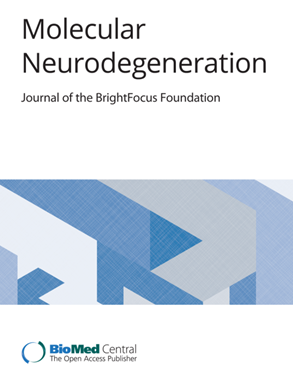Microglia networks within the tapestry of alzheimer’s disease through spatial transcriptomics
IF 17.5
1区 医学
Q1 NEUROSCIENCES
引用次数: 0
Abstract
Understanding Alzheimer’s disease (AD) at the cellular level requires insights into how diverse cell types respond to hallmark pathologies, including amyloid plaques and tau aggregates. Although single-cell transcriptomic approaches have illuminated the trajectories of AD progression in both animal models and human brains, they often lack the spatial context necessary to fully comprehend cell–cell interactions and microenvironmental influences. In this review, we discuss recent advances in spatial transcriptomics—integrating both imaging- and sequencing-based methods—that map gene expression within intact brain tissues. We highlight how these technologies have revealed regional heterogeneity and functional diversity among microglia, and their dynamic interactions with astrocytes, neurons, and oligodendrocytes in both aging and AD. Emphasis is placed on the interactions of microglia within the amyloid plaque niche, their contribution to synaptic degeneration, and how aging accelerates microglial and glial activation. By synthesizing findings from AD mouse models and physiologically characterized human tissues, we provide a comprehensive view of the cellular interplay driving AD pathogenesis and offer insights into potential therapeutic avenues.通过空间转录组学研究阿尔茨海默病织锦中的小胶质细胞网络
在细胞水平上理解阿尔茨海默病(AD)需要深入了解不同类型的细胞如何对标志性病理(包括淀粉样斑块和tau蛋白聚集)做出反应。尽管单细胞转录组学方法已经阐明了动物模型和人脑中AD进展的轨迹,但它们往往缺乏充分理解细胞-细胞相互作用和微环境影响所必需的空间背景。在这篇综述中,我们讨论了空间转录组学的最新进展——整合基于成像和测序的方法——在完整脑组织中绘制基因表达。我们强调这些技术如何揭示小胶质细胞之间的区域异质性和功能多样性,以及它们与星形胶质细胞、神经元和少突胶质细胞在衰老和AD中的动态相互作用。重点放在淀粉样斑块生态位内小胶质细胞的相互作用,它们对突触变性的贡献,以及衰老如何加速小胶质细胞和胶质细胞的激活。通过综合阿尔茨海默病小鼠模型和生理特征的人体组织的发现,我们提供了驱动阿尔茨海默病发病机制的细胞相互作用的全面观点,并为潜在的治疗途径提供了见解。
本文章由计算机程序翻译,如有差异,请以英文原文为准。
求助全文
约1分钟内获得全文
求助全文
来源期刊

Molecular Neurodegeneration
医学-神经科学
CiteScore
23.00
自引率
4.60%
发文量
78
审稿时长
6-12 weeks
期刊介绍:
Molecular Neurodegeneration, an open-access, peer-reviewed journal, comprehensively covers neurodegeneration research at the molecular and cellular levels.
Neurodegenerative diseases, such as Alzheimer's, Parkinson's, Huntington's, and prion diseases, fall under its purview. These disorders, often linked to advanced aging and characterized by varying degrees of dementia, pose a significant public health concern with the growing aging population. Recent strides in understanding the molecular and cellular mechanisms of these neurodegenerative disorders offer valuable insights into their pathogenesis.
 求助内容:
求助内容: 应助结果提醒方式:
应助结果提醒方式:


